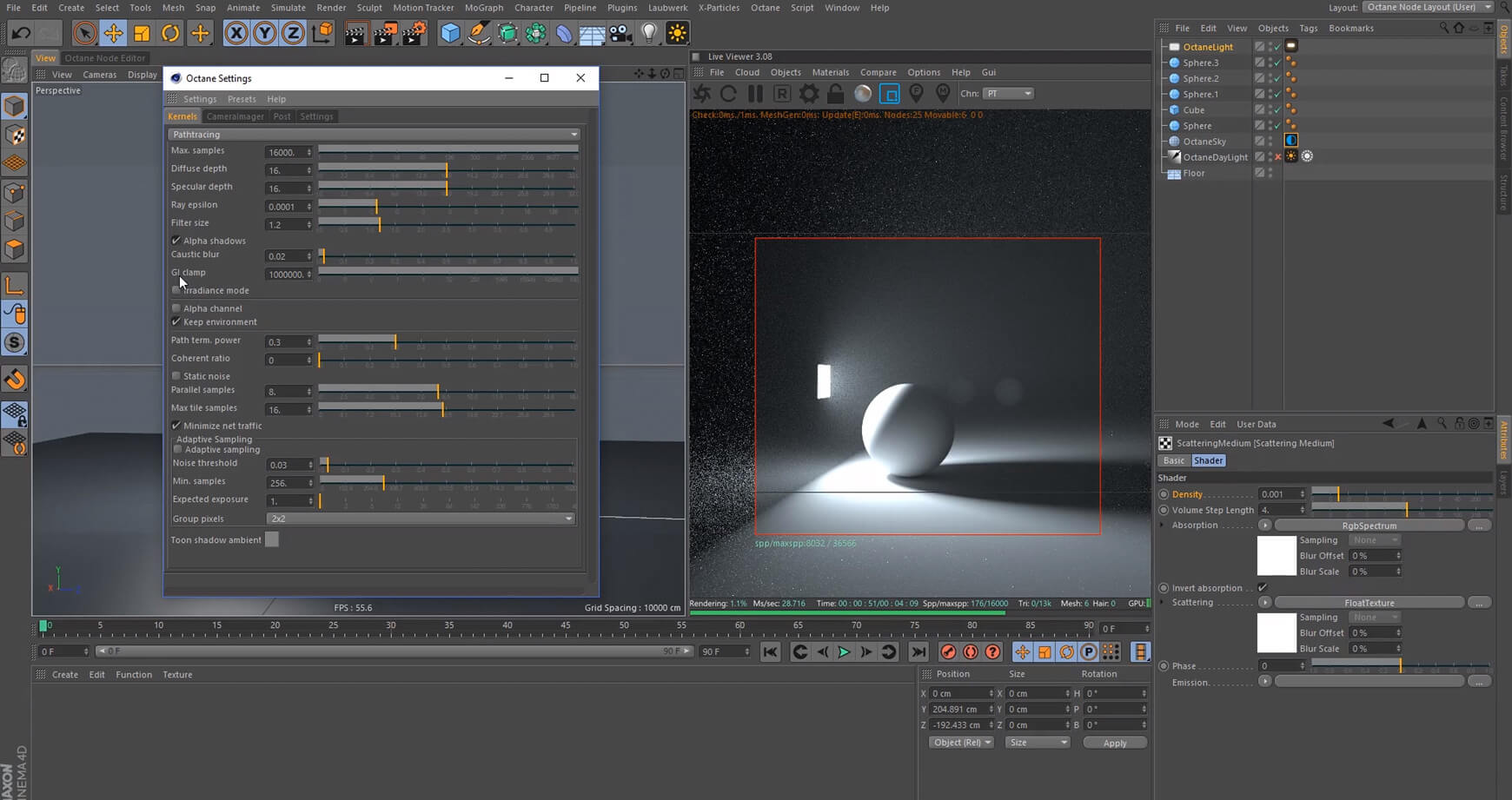



This is where you create Octane Materials, Lights and Cameras, as well as a bunch of other special objects like Scatter and Fog. Under that is a menu bar with File, Cloud, Objects. New stable and beta versions are available in the Forum (you need to set up a separate forum account). You can also periodically go to the downloads page to see what the latest version is.

You can, however, check to see if there’s a new version in the Octane Live Viewer’s Help menu. Octane won’t automatically update itself to newer versions - you’ll need to download and install them as they come out (don’t forget to remove the extra files each time!) Instructions on how to do that are here. It tells you which version of Octane you’re using and how many days left on your subscription you have. You’ll likely want to dock this in your interface somewhere (normally people put it to the right of the Viewport window, but it’s your interface, put it wherever you want).Īt the very top in the title bar. Not only does it give you a lightning-quick live view (hence the name) of what your scene is going to look like, but it’s also where nearly everything Octane-related is housed in C4D. You get this by going to the Octane menu at the top of the C4D interface and choosing Live Viewer. This is the heart of Octane Render, and how you’ll be interacting with Octane in C4D most of the time. It’s designed to work hand in hand with the manual and help with discovery (wait, it can do that?!) and grouping categories of things together so you never have to say “where was that again?”. It’s meant to be an easy, searchable reference that shows where everything is and what it all does, all in one place. And with Octane 3.0 we provide integration to a beta version of the new Octane Render Cloud to scale for all of your on-demand GPU compute needs.This guide is closely related to the Getting Started With Octane Render for C4D walkthrough. Attached to your editing tools? No problem! Octane supports more than 21 plugins and has a fully interactive, real-time 3D editing viewport. Use OctaneRender to create images of the highest possible quality at speeds up to 50x faster than CPU-based, unbiased renderers. The release also incorporates important industry standards for GPU rendering, including Open Shader Language (OpenSL) and OpenVDB for particle simulation. Features include volumetric light field primitives and deep motion buffers for high frame rate VR rendering. The release of the new OctaneRender 3, brings new state-of-the-art tools never seen before in any production renderer. With Octane’s parallel compute capabilities, you can create stunning works in a fraction of the time. What does that mean? It means that Octane uses the graphics card in your computer to render photo-realistic images super fast. OctaneRender is the world’s first and fastest GPU-accelerated, unbiased, physically correct renderer.


 0 kommentar(er)
0 kommentar(er)
